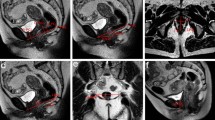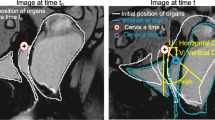Abstract:
In the diagnostic work-up of vaginal prolapse after hysterectomy cystoceles can be identified by sonography, whereas enteroceles and rectoceles can only be suspected in a routine clinical setting. The present pilot study was undertaken to investigate the diagnostic role of magnetic resonance imaging (MRI) in the differentiation of cysto-, entero- and rectoceles in women with posthysterectomy vaginal prolapse. Thirteen women (mean age 61, SD ± 7 years) with posthysterectomy vaginal prolapse underwent MRI (Gyroscan S 15, Philips). A median sagittal image series was obtained with a gradient-echo sequence, fast field echo, both at rest and during Valsalva maneuvers. MRI allowed the identification of cysto-, entero- and rectoceles, and differentiation between entero- and rectoceles in cases with inconclusive clinical findings. These findings make dissection more reliable and improve the outcome of hernia repair. No additional diagnostic information is obtained with MRI compared to ultrasound in the assessment of cystoceles.
Similar content being viewed by others
Author information
Authors and Affiliations
Additional information
Rights and permissions
About this article
Cite this article
Tunn, R., Paris, S., Taupitz, M. et al. MR Imaging in Posthysterectomy Vaginal Prolapse . Int Urogynecol J 11, 87–92 (2000). https://doi.org/10.1007/s001920050076
Issue Date:
DOI: https://doi.org/10.1007/s001920050076




